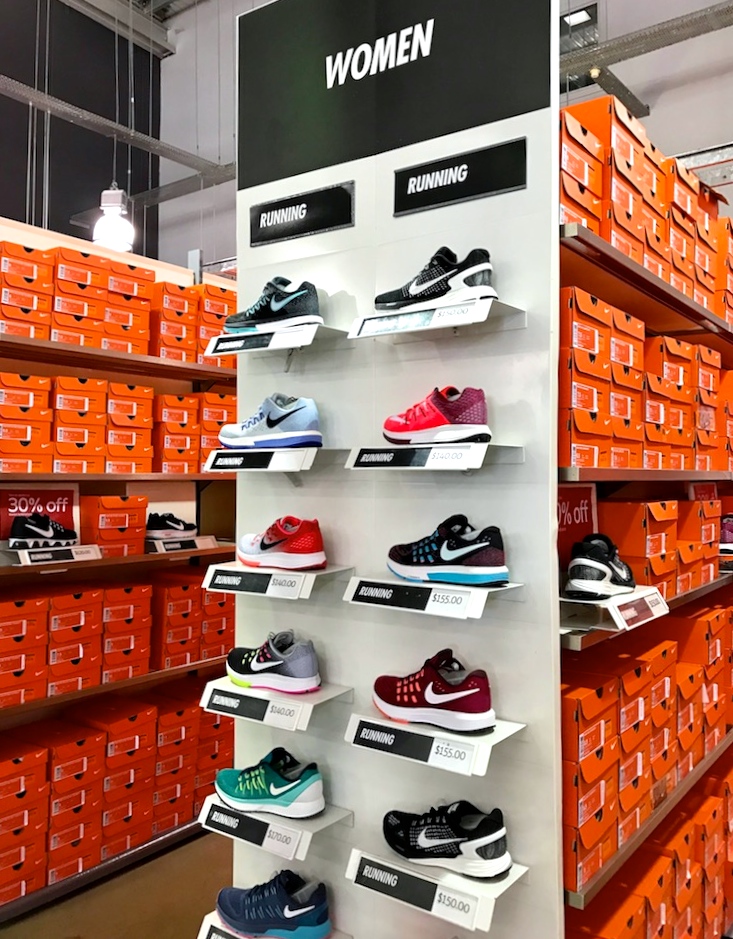
The one way fare for both options is $1.25 or a day pass $3.00 which you can use on both the Streetcars and RTA and is great value. Claiborne Ave this will drop you off right in front of the store at stop South Carrollton and Tulane Avenue. An alternative option is by RTA (public bus), number 39 towards S.

From here turn left onto South Carrollton Ave and the store is 6 blocks, an easy 10 to 15 minute walk. Both lines the stop where you get off is the same - Carrollton Ave (landmark is Walgreens on the right corner). Using the Streetcar you have two options either the Canal Streetcar towards Cemeteries (red line) or the Canal Streetcar towards City Park & Museum of Art (green line). The store is easily reached using public transportation taking about 20 to 30 minutes. It is worth a visit if you want to bag yourself a bargain. The store is the same size, has all the same discounts and merchandise as the factory stores located in the outlet malls across the USA. “By evolving design and supply chain processes, brands can move merchandise planning much closer to the selling season, resulting in more accurate investments, allocations and replenishment, as well as better alignment with customer expectations.Note there is no Nike Outlet store located in the Riverwalk Outlet Mall, it is located a bit further out on South Carrollton Ave. “Some brands are moving points of production much closer to points of sale, and we are seeing several brands take much greater control of logistics processes, including through acquisition,” said Dave Bruno, director of retail market insights at retail tech company Aptos. Right now, 80% of the company’s footwear factories are in South Asia. The most likely solution could be to diversify where it produces its products. The scale of Nike’s business ($37 billion in 2020) means rapid production is necessary to meet demand. But shut down factories is a much more difficult challenge to circumvent. Nike could go the way of some other big companies like Walmart and look to take some shipping into its own hands to alleviate the first problem. While the most recent quarter wasn’t terribly affected by this, future quarters certainly will be. More than half of Nike’s apparel factories are in Vietnam, and the brand has already lost more than 10 weeks of production time due to the lockdowns.
#Nike factory full
Nike’s factories in Indonesia, however, are back to full production, but are still suffering from the lost time they were under lockdown. Vietnam had one of the best Covid responses in the world in 2020 and cases remained minimal for almost all of 2021, until a surge arrived in late July. Secondly, and worse for Nike specifically, is that both Vietnam and Indonesia went back into lockdown, fording several of Nike’s factory partners to temporarily close.

And so these elevated transit times that we’re seeing - we’ve been talking about them now for several quarters - they worsened this quarter and continue to have an impact on our business.” “We would have had an even stronger top-line result if we had more product available to serve that consumer demand.

“So as we finished Q1 with higher levels of in-transit inventory, that means that we had full price inventory that was unavailable to use to serve current consumer demand in this quarter,” Donahoe said on the call. In 1991, American labour activist Jeffrey Ballinger published a report on Nike’s factory practices in Indonesia, exposing a scandal: below-minimum wages, child labour and appalling conditions likened to a sweatshop a factory or workshop where employees work long hours for low money in conditions that are hazardous to health. Nike typically expects product to arrive from its factories in 40 days, but now transit times have increased to 80 days. Shipping containers have increased in price, while ports remain congested all along the West oast of the U.S. First, shipping times and costs have continued to worsen over the course of the pandemic.

The problems have mainly been twofold, he said.


 0 kommentar(er)
0 kommentar(er)
